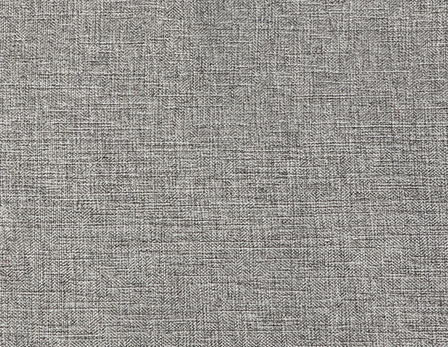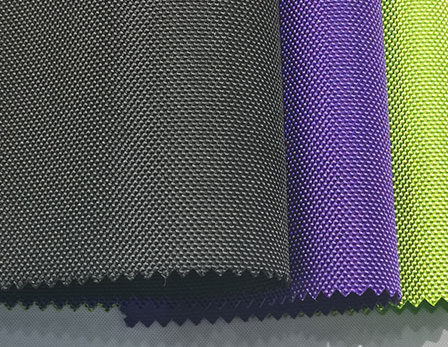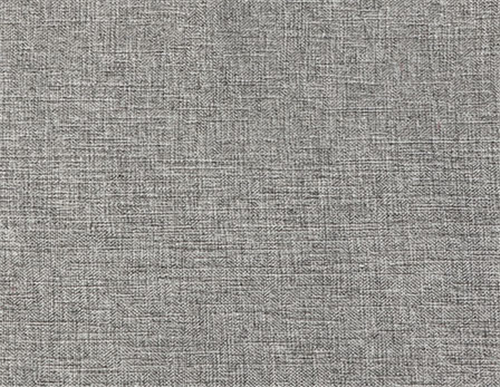

Sourcing the right fabric is crucial for any clothing line as it directly impacts the quality and overall success of the products. The fabric plays a significant role in determining the comfort, durability, and aesthetic appeal of the garments. Therefore, selecting the right fabrics is essential to meet customer expectations and compete effectively in the market.
Finding a reliable fabric supplier brings numerous benefits to a clothing line. Here are some advantages of choosing the right fabric supplier:
• Quality fabrics: A reputable fabric supplier ensures that the fabrics provided are of high quality, meeting industry standards. This helps in creating garments that are durable and retain their shape and color after multiple washes.
• Variety of options: A good supplier offers a wide range of fabric options, enabling designers to explore different materials, textures, and finishes for their clothing line. This helps in creating unique and diverse collections.
• Timely delivery: A reliable supplier understands the importance of timely delivery to meet production deadlines. They have efficient logistics systems in place to ensure that the fabrics are delivered on time, allowing the clothing line to operate smoothly.
• Competitive pricing: Establishing a good relationship with a fabric supplier often results in favorable pricing terms. Bulk purchases or long-term partnerships can lead to discounts, helping the clothing line to maintain competitive pricing for their products.
• Sustainability: Many fabric suppliers now offer sustainable and eco-friendly options, which align with the growing demand for sustainable fashion. Partnering with such suppliers allows clothing lines to cater to consumers who prioritize ethical and environmentally conscious choices.
When it comes to fabric selection for a clothing line, there are various options to choose from. Some common fabric types include:
| Fabric Type | Description |
|---|---|
| Cotton | Soft, breathable, and versatile option suitable for a wide range of clothing items. |
| Silk | Luxurious and lightweight fabric with a smooth and shiny appearance. Often used for formal wear and delicate garments. |
| Polyester | Durable and wrinkle-resistant synthetic fabric commonly used for sportswear and casual clothing. |
| Linen | Lightweight and breathable fabric made from flax fibers. Ideal for warm weather clothing due to its excellent moisture-wicking properties. |
| Wool | Warm and insulating fabric suitable for winter clothing. Can be blended with other fibers to enhance durability and softness. |
| Denim | Sturdy and durable fabric commonly used for jeans and casual wear. Known for its characteristic blue color and twill weave. |
When choosing fabric types for a clothing line, several factors must be taken into account, including:
• Comfort: Consider the intended use of the garments and select fabrics that offer comfort and ease of movement.
• Durability: Ensure that the fabrics chosen can withstand regular wear and washing without losing their shape or color.
• Aesthetic appeal: Choose fabrics that align with the desired look and feel of the clothing line, considering texture, pattern, and color options.
• Cost-effectiveness: Balance the quality of the fabric with its cost to ensure that it fits within the overall budget of the clothing line.
• Manufacturing requirements: Take into account any special requirements for manufacturing, such as ease of cutting and sewing, as well as the fabric's ability to hold shape during the garment production process.
By understanding different fabric types and considering key factors during fabric selection, clothing lines can create garments that meet both customer expectations and market demands.

When researching fabric suppliers for a clothing line, it is important to look for those who have a reputation for reliability and quality. Some ways to identify reliable fabric suppliers include:
• Checking customer reviews and testimonials: Reading reviews and testimonials from other clothing lines or designers who have worked with the fabric supplier can provide insights into their reliability and the quality of their fabrics.
• Assessing their experience and industry knowledge: A fabric supplier with years of experience and industry knowledge is more likely to understand the specific needs and requirements of a clothing line. This can lead to better communication and collaboration throughout the sourcing process.
• Evaluating their production capabilities: It is crucial to ensure that the fabric supplier has the capacity to meet your production demands. This includes assessing factors such as their production facilities, equipment, and workforce.
• Verifying their certifications: Look for fabric suppliers who have relevant certifications, such as ISO certifications or certifications related to sustainable and ethical sourcing practices. This can indicate their commitment to quality and responsible sourcing.
While researching fabric suppliers, there are several factors to consider to ensure a successful partnership. These factors include:
• Price and minimum order quantities: Compare the pricing and minimum order quantities of different fabric suppliers to find a balance between cost and quality that aligns with your clothing line's budget.
• Sample requests: Requesting fabric samples from potential suppliers allows you to assess the quality, texture, and suitability of the fabrics for your specific clothing line.
• Communication and responsiveness: Evaluate how responsive and communicative the fabric supplier is during the sourcing process. Good communication is essential for maintaining a smooth and efficient supply chain.
• Delivery timelines: Inquire about the fabric supplier's delivery timelines and ensure that they can meet your production deadlines. Timely delivery is crucial for the smooth operation of a clothing line.
• Sustainability and ethical practices: Look for fabric suppliers who prioritize sustainability and ethical practices. This includes choosing suppliers who offer eco-friendly fabric options or have certifications related to responsible sourcing.
By conducting thorough research and considering these factors, clothing lines can find reliable fabric suppliers that can meet their production needs and contribute to the overall success of their clothing line.
When evaluating fabric quality for a clothing line, it is crucial to consider factors that affect durability and overall performance. Here are some key points to keep in mind:
• Fiber content: Understanding the fiber content of the fabric is essential, as different fibers have varying levels of durability and performance. Natural fibers like cotton and silk are known for their breathability and comfort, while synthetic fibers like polyester and nylon offer strength and durability.
• Weave and construction: The way the fabric is woven and constructed can impact its strength and longevity. Look for fabrics with tight weaves and sturdy construction that can withstand repeated wear and laundering.
• Weight and thickness: Fabric weight and thickness can give you an indication of its durability. Heavier and thicker fabrics are generally more durable and resistant to wear and tear.
• Colorfastness: Ensuring that the fabric is colorfast is important to prevent fading or bleeding when exposed to moisture or sunlight. Look for fabrics that have been tested for colorfastness to ensure long-lasting color vibrancy.
• Pilling resistance: Pilling refers to the formation of small balls or clusters of fibers on the fabric surface. Assessing a fabric's pilling resistance can help determine its ability to maintain a smooth appearance over time.
To assess fabric quality, there are some testing methods that can be employed. These include:
| Test | Description |
|---|---|
| Tensile strength test | This test measures the fabric's ability to withstand pulling or stretching forces, indicating its overall strength and durability. |
| Seam strength test | By evaluating the seam strength, you can determine how well the fabric holds up at the seams, which are often areas prone to stress and potential damage. |
| Rub test | This test involves rubbing the fabric against a rough surface to determine its abrasion resistance and potential for wear. |
| Colorfastness test | This test assesses the fabric's resistance to color fading or bleeding when exposed to various conditions, such as washing or exposure to sunlight. |
| Pilling test | By subjecting the fabric to friction, either through mechanical or visual methods, you can evaluate its pilling resistance and determine the likelihood of pilling. |
By understanding fabric quality and employing appropriate testing methods, clothing lines can ensure that the fabrics they choose meet their quality standards and contribute to the longevity and success of their clothing line.

When it comes to negotiating fabric prices for a clothing line, there are a few key tips to keep in mind to help you get the best deal:
• Do your research: Before entering into negotiations, research the prevailing market prices for the type of fabric you are interested in. This will give you a baseline to work from and help you determine what is a fair price.
• Be prepared to walk away: Don't be afraid to walk away from a deal if the price doesn't meet your budget or requirements. Sometimes, suppliers are willing to negotiate further when they see that you are serious about getting a fair price.
• Bulk orders: If you plan on placing a large order, suppliers may be more open to negotiating a lower price per yard. Buying in bulk can often provide you with leverage in price negotiations.
• Establish a long-term relationship: Building a good relationship with a fabric supplier can work in your favor when negotiating prices. Suppliers are more likely to offer discounts or better terms to loyal, repeat customers.
Minimum order quantities (MOQs) refer to the minimum amount of fabric that a supplier requires you to purchase in order to place an order. It is important to understand MOQs and consider them when negotiating prices. Some key points to note about MOQs:
• Lower MOQs may come with higher prices: Suppliers often offer lower prices per yard for larger orders. If you are unable to meet the MOQ, you may have to pay a higher price per yard.
• Consider storage and inventory costs: When negotiating MOQs, take into account any storage or inventory costs associated with buying larger quantities of fabric. Make sure that the MOQ aligns with your production plans and does not result in excessive inventory.
• Flexibility in MOQs: In some cases, suppliers may be open to negotiating MOQs, especially if you are a new customer or have a strong relationship with the supplier. It never hurts to ask if there is any flexibility in the MOQ requirements.
In conclusion, negotiating fabric prices and understanding MOQs are important aspects of managing a clothing line. By following these tips and considering the factors involved, you can secure favorable prices and quantities of fabric for your business.
Everything You Need To Know About The Most Popular Fabrics
2024-03-06
Discover the characteristics, advantages, and disadvantages of popular fabrics including cotton, polyester, silk, and wool. Learn how to choose the right fabric for your projects and explore their unique properties in detail.
Clothing fabrics for sensitive skin, according to textile experts
2024-02-26
Discover the best clothing fabrics for sensitive skin recommended by textile experts. Learn about hypoallergenic options like cotton, bamboo, silk, and modal, and make informed choices for comfortable wear.
Best clothing fabric for sensitive skin
2024-02-20
Discover the best clothing fabrics for sensitive skin, including cotton, bamboo, silk, and hemp. Learn about their benefits and properties to ensure comfort and well-being.
An Introduction to Different Types of Fabric
2024-02-06
Unlock the secrets of fabric types and their properties with our comprehensive guide. From luxurious silk to durable polyester, explore the perfect textile for your needs. Choose wisely and elevate your clothing game today!